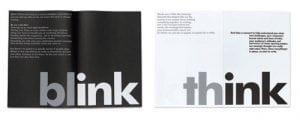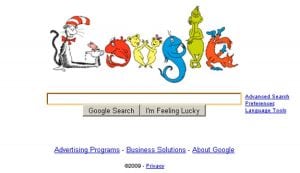Marketing names can change and make sense.
Flexible brand names is not for all. For instance, for many companies, their brand name is static. So they create it once and then use it for years, perhaps even decades without changing it at all. Even as their logos get updated, the brand name remains the same. Is that wrong?
However, that’s not the only option. Instead of sticking with the same old name, have you considered the possibility of flexing your marketing muscles a bit and tweaking your brand name? Keep reading to learn how to do it.
What is a Flexible Brand Name?
Furthermore, a flexible brand name is a name that can be adapted in a variety of ways to suit different audiences and marketing scenarios. In all cases, your brand name appears in the marketing material. However, it may appear as part of a sentence or part of a longer word.

If you are interested in the idea of using a flexible brand name, you can consider using your name as it currently is. Alternatively, you may want to look at an abbreviation or monogram of your name if that makes the process easier. Here are the basic options. Read more The science of logo design
Expanded Brand Names
The first option is to take your brand name and use it in combination with other words. You may decide to use it as part of a sentence or phrase.
This is a technique that is particularly effective for companies with many divisions or selling points. For example, look at this visual from Plymouth University brand guidelines:

Notice that they have chosen to pair their “With Plymouth University” tag line with a series of strong verbs that include discover, celebrate, and imagine. All of these are words that are likely to speak to potential students.
Furthermore, the use of a different color for each word helps to make each iteration of the logo unique. While they all appear together here, the university could easily use each one of these on a separate brochure or web page to connect with students.
Words that Turn into Other Words
Another way to make your brand name flexible, and one that works particularly well if your brand name is short, is to incorporate your name directly into other words. Here’s an example from a UK-based copywriting company called Ink:

What you can see here is that they have used their brand name to make up a variety of words that speak to what they do, including BLINK and THINK. The creative visuals here ensure that their brand name remains front and center.
Above all, this technique is ideal for creative companies because it puts your creativity front and center for potential clients to see. It’s a way of demonstrating your flexibility in an immediate and visual way. Mind mapping to figure out what you want
Abbreviations Incorporated into Words
What if your name doesn’t immediately lend itself to this sort of technique? All is not lost. Instead of using your entire name, consider taking an abbreviation or your company’s initials and using that instead.
Here’s an example from University of the Arts London using their initials, UAL, to form a series of words:

Note that the words chosen speak directly to what this school teaches, particularly VISUAL – perfect for an art school.
Tips for Conceptualizing a Flexible Brand Name
If you like the idea of using a flexible brand name, then you may need to do some serious brainstorming to come up with a way to make it work. As noted earlier, not every company name lends itself to work play, but here are some ways to work through it.
Mind Mapping
For instance, the first thing you may want to try is mind mapping, a technique we discussed depth in this blog post.
However, to create a mind map for flexible brand names, start with your company name or logo in the center of the map. Use the branches to do thinks like:
- 1. Test out abbreviations and initials for possible use
2. Brainstorm words that could work with your logo
3. Draw pictures that illustrate things you do
4. Link your brand name to particular products or services you sell
For instance, you want to make your mind map as expansive as possible. That way, you’ll have the best possible chance of striking flexible brand name gold as you work.
Anagrams and other flexible brand names Ideas
However, if you are working with initials or an abbreviation, then it may be helpful to play around with those letters. Create some anagrams. For example, the initials of your name don’t need to be sequential in a word. As long as they are in the correct order.
More so, imagine a company with the initials ADO. You might be able to use them together in words like ADOPT or ADORABLE. However with a little bit of creativity, you could expand it to include words like CANDOR.
Furthermore, you might also want to try incorporating your company’s name into a variety of images. Even without changes to the name itself, you can try putting your company name or initials into surprising situations. Such as graffiti on the side of a building.
More importantly, Google is a good example of using a brand name in ways that are flexible. The company doesn’t incorporate its name into other words or sentences. However, they do change it frequently to honor holidays and people. Here’s an example honoring the legendary Dr. Seuss:

As you can see, there are many ways you can change up your logo and brand name to make them uniquely suitable to a situation.
How to Use a Flexible Brand Name
Once you have conceptualized a flexible way to use your brand name, it’s time to get into the trenches. Putting it to work for you. Here are some suggestions on how to use your flexible brand name online and offline.
Online Marketing
Online marketing offers a variety of ways to use a flexible brand name or logo. Here again, Google is an obvious example. They use many variations on their logo each year, many of them featuring the work of different artists and animators.
Here are some suggestions about how to use your flexible brand names online:
If you are using variations of your name to represent particular products or services, you can use a different version of your brand name on each product page. It’s an ideal way to give your site some visual continuity without being repetitive.
If you have an online store. You may want to offer customers the chance to buy merchandise that incorporates different versions of your name or logo.
Encourage customers to create variations on your brand name. Google does this all the time, and you can too.
The key is to be as flexible in your use of your brand name as you were in creating it.
Print Marketing
Print marketing offers an ideal way to make creative use of your new flexible brand name. For example, if you are attending a trade show or exhibition, you can create an array of brochures, postcards, or posters. Using your flexible brand names to create your display.
Flexible brand names make it simple to display your diversity at a glance. Using a rainbow of colors as Plymouth University did in the example above is a quick and easy way to make sure that people realize that each iteration of your name is slightly different from the others.
You may also want to use variations on your name to separate sections of your annual report or to display on company vehicles. The possibilities are truly endless.
Social Media uses flexible brand names.
Finally, let’s talk about how to use flexible brand names in social media marketing. In many ways, social media is the idea platform for this type of marketing.
For example, say you already have a Facebook page for your brand but you want to set up separate accounts for individual products or services. You can use flexible brand names to differentiate the sub accounts from the main account while still tying them together visually.
Alternatively, you might use flexible versions of your brand name to share news about your company on your main page. When you release a new product, or want to tout a particular benefit of what you sell, use a variation on your brand name to get the point across in an instant.
You may also want to set up a Pinterest board where you post all of the variations on your brand name for people to see. This is a very effective way to make sure that people see what you are doing – and appreciate it.
Conclusion
Flexible brand names might not work for every company. However, if your company offers a variety of products or benefits to customers, it may be worth considering taking the time to develop a series of flexible brand names to use in your marketing.
The key is to be creative and consistent, and to make sure that customers don’t have to guess whose brand name they are seeing. If you do that, your flexible brand name will be a success.
